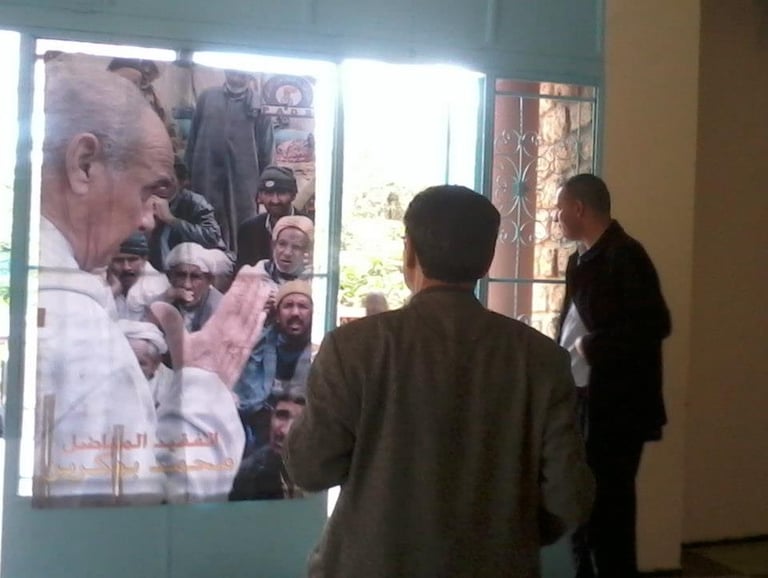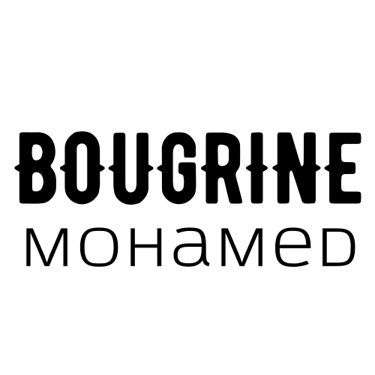Prisons exchange prisoners for history
CASABLANCA // No one saw the prisoners come and go, but everyone knew they were there – hundreds squashed into a dark warren beneath the streets of Derb Moulay Cherif, a working-class quarter in Casablanca.
إهانة المقدسات
The National - John Thorne
12/10/2008


John Thorne, Foreign Correspondent
CASABLANCA // No one saw the prisoners come and go, but everyone knew they were there – hundreds squashed into a dark warren beneath the streets of Derb Moulay Cherif, a working-class quarter in Casablanca.
Today marks 60 years since the United Nations adopted the Universal Declaration of Human Rights, the first global statement of such values. In Morocco, much of the intervening period is remembered as the “Years of Lead”, a decades-long ordeal of political repression.
But starting next year, the government plans to transform major political prisons around the country into commemorative museums and cultural centres, part of a larger reconciliation effort that has included inquests into past human rights abuses by the Moroccan state.
Human rights groups have welcomed the idea, but say deeper political reform is needed to make abuses impossible in the future.
With its dingy cafes, lines of washing and rows of discoloured housing blocks resembling bad teeth, Derb Moulay Cherif looks like any other down-at-heel Casablanca neighbourhood. But deep underground lies a disused prison where hundreds of political prisoners languished during the 1970s and 1980s.
Things started to go downhill in 1961 with the rise to power of King Hassan II, said Saddik Lahrach, a human rights activist imprisoned in Derb Moulay Cherif for his leftist political views.
Growing opposition from Morocco’s leftist parties to the king’s heavy-handed rule, plus two failed coup attempts by the military, provoked waves of repression that swept thousands into jails and secret detention centres.
“I liked the previous king, Mohamed V, but with Hassan II it was hatred,” said Mr Lahrach, who as a university student in the capital, Rabat drifted into Marxist-Leninist circles as he watched neighbours and relatives disappear into prison.
One night in 1975 came a knock at Mr Lahrach’s door. Police crowded in, toting machine-guns, and whisked him into custody. Two days later, shackled and blindfolded, he was led down into the recesses of Derb Moulay Cherif prison.
Inmates were crowded into cells and hallways, and beaten for the slightest whisper, Mr Lahrach said. “The torture was systematic. I was often beaten for laughing, my only way to stay sane.”
He would spend five months in Derb Moulay Cherif, and nine more years in other prisons.
Meanwhile above ground, local children had a story that if you walked too close to the prison, arms would reach out, snatch you and drag you inside, said Jalal, 34, who grew up a few streets away from the police station concealing the prison’s entrance.
“When I was a child, I was afraid to go near the place,” said Jalal, who did not want to give his surname. “Now I want the prison to become a museum to help make sure we never have to relive the same nightmares.”
That is the goal of a new government programme to rehabilitate five major prisons as museums and cultural centres, said Ahmed Zainabi, an official with Morocco’s Consultative Council on Human Rights who is in charge of the project.
Government planners are meeting with engineers, architects and local communities to decide how to renovate each prison, Mr Zainabi said.
“It’s very important to listen to the victims, because it’s about honouring their suffering,” said Habib Nassar, a consultant with the New York-based International Center for Transitional Justice, which is advising the Moroccan government on the project.
“It’s not just a matter of turning a page,” Mr Nassar said. “You’re preserving the memory in order to prevent the repetition of violations – the message is ‘Never again’.”
Since the death of Hassan II in 1999, Morocco has sought to confront abuses carried out during his reign. In 2004, the government set up a truth commission that looked into 16,861 cases of alleged human rights violations, awarding indemnities to 9,280 people.
In a 2005 report, the commission recommended constitutional reforms giving primacy to international human rights law, strengthening the separation of powers and creating an independent judiciary.
However, the government has so far failed to act on those recommendations, human rights activists said.
“Today we can speak freely, but the government doesn’t listen to what we say,” said Mohammed Bougrine, a human rights activist who worked to make the existence of secret prisons known to the public in the 1970s.
Human rights have improved in Morocco, said Mohammed Sabbar, president of the Moroccan Forum for Truth and Justice, which represents former human rights victims and their families. “But unfortunately none of that evolution has been institutionalised.”
“The government has not rejected any of the commission’s recommendations,” said Khalid Naciri, the communication minister. But the kind of constitutional reform sought by human rights groups takes time to bring about, he said.
Mr Lahrach has never gone back to Derb Moulay Cherif, but hopes the prison will become a memorial with plaques listing the names of all who passed through its dark corridors.
“Then I’d like to return with my children, to help them understand what their father and his comrades endured.”
